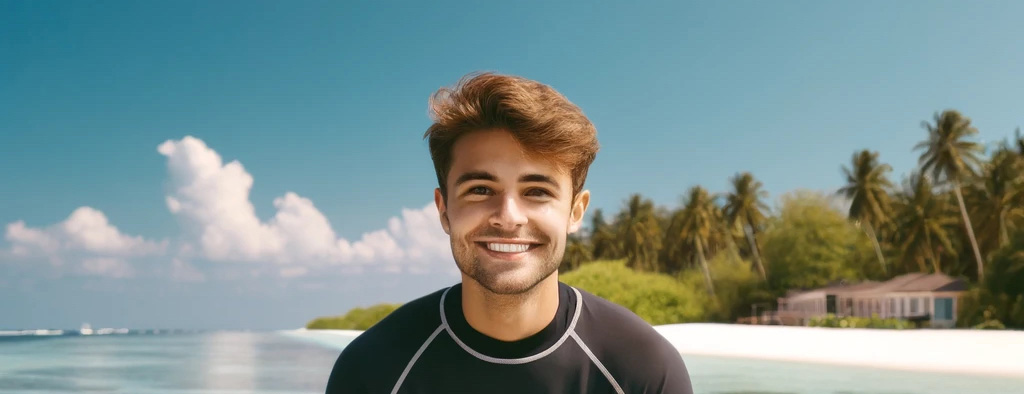
Typically, a dive plan calls for the deepest part of the dive first and slowly becomes shallower as the dive progresses. In such cases, divers should expect to become progressively more buoyant as the dive proceeds. As the depth decreases, the air in the BCD will expand, resulting in increased positive buoyancy.
During the dive, these small increases may go unnoticed by the diver until he suddenly realizes that he is rising. In such situations, it is best to act quickly and vent the expanding gas. While it is typically easiest to vent gas from the BCD from a vertical position, the task can be completed with relative ease via two different methods while horizontal.
First, using the standard deflator mechanism, by raising the left shoulder above your waistline and pressing the deflator button. This will place the deflator hose as close to the highest point of the BCD as possible, which is where the gas will naturally go.
Alternatively, if the BCD you are using has a deflator mechanism near the bottom, from a Neutral Trim position, lower your head and shoulders so the deflator is above the rest of the BCD, tilt your body slightly, to align the deflator with the surface, and actuate the deflator valve. Again, in this position, the deflator valve will be at the highest point, allowing the gas to escape with ease.
Neutral Trim is a technique typically put into practice at depth, but it is also very useful during safety stops.
It is recommended to practice your hovering skills in the Neutral Trim position when you have an opportunity to do so. For example, when you are completing a safety stop on a line or using a decompression bar.
Maintain neutral buoyancy and continually monitor your depth to avoid accidental ascents. As you improve, you may choose to let go of the line entirely while maintaining visual contact and staying within arms reach.
When you did the weight check at the beginning of the dive, your cylinder was likely filled close to its maximum operating pressure. A scuba cylinder weighs more when it’s full, and becomes progressively lighter as you breath gas from it. This means that at the end of the dive, the weight of the gas you used during the dive will no longer be adding to your negative weight balance. If you weighted yourself correctly at the beginning of the dive, this difference should not cause any problems. However, if you were light at the beginning of the dive, you may encounter difficulties establishing neutral buoyancy during your safety stop at the end of the dive.
Ultimately, the ability to remain neutral during a safety stop largely depends on how relaxed you are and how well you manage your breathing. If you are breathing rapidly, or sporadically, you will have difficulty establishing and maintaining neutral buoyancy. Just like the other phases of the dive, it’s best to breath normally during the safety stop. From a physiological standpoint, the reason for a safety stop is to help remove residual nitrogen from the blood. A diver that is breathing irregularly during the safety stop will not gain the same advantages from the stop as a diver that is relaxed and breathing normally.